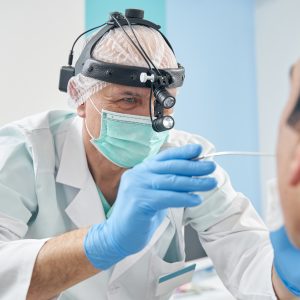The gallbladder is an organ that’s overlooked by many. Indeed, you might have no idea where the gallbladder is actually located or what are its functions in your body. The most common cause of gallbladder attacks comes from gallstones. Let’s learn more about the gallbladder, the causes and symptoms of a gallbladder attack, and what treatments are available.
What’s the gallbladder?
The gallbladder is a part of the digestive system. It can be found on the right side of the stomach, below the liver. Its shape is thin and a little rounded like a pear. Its primary function is to obtain and store bile, widely known as gall, produced by the liver.
Bile is a dark-green to a yellowish-brown substance that normally aids in the absorption and breakdown of dietary fats. In the small intestine, bile acids are important for the digestion and absorption of fats and fat-soluble vitamins.
What are gallstones?
Gallstones, while normal and typically painless, can cause pain and discomfort when they obstruct the gallbladder. These pesky little stones can be detected using an ultrasound scan and are usually handled by simply waiting for them to dissolve.
Gallstones are pretty common, the symptoms are usually painless. It normally stays in the gallbladder or passes through the biliary system without causing any major pain, nor any complications. As bile crystallizes and hardens, gallstones form. Bile is normally saturated with cholesterol or bilirubin. Moreover, Gallstones may prevent bile from leaving the gallbladder.
What can cause a gallbladder attack?
Here are some of the main factors leading to gallbladder attacks:
- cholangitis (bile duct inflammation)
- gallbladder polyps
- gallbladder cancer
- gallstones
- acute cholecystitis
- or biliary colic
It is important to note that if gallstones result in a gallbladder complete obstruction, this could lead to a rupture of the latter. In fact, this is why we strongly recommend visiting your nearest doctor if you experience uncommon strains around this area of your body.
What are the signs and symptoms of a gallbladder attack?
A gallbladder attack most likely occurs after a big meal. This happens because fatty foods cause the body to produce more bile. To help you understand the symptoms, here’s a list of the different kinds of strains or pain you could experience:
Belly pain
The pain generally lasts for 15 minutes to an hour. It begins in the upper right part of the stomach, just under the ribs, and spreads outwards, eventually reaching the middle of the belly or upper back. Gallbladder stones are often followed by constant pain, which mostly occurs after meals.
Pain between the shoulder blades
You can feel the pain on the entire shoulder area since the gallbladder’s nerves extend to the muscles in the back, especially the region around the right shoulder blade.
Heart palpitations and chest pains
A gallbladder attack is often misdiagnosed as a heart attack. Acid is lodged in the stomach and forced up into the chest when the gallbladder or bile duct is blocked or infected, causing heart attack-like pain.
Other symptoms:
Fever
If you have unexplained fever, it may be a sign that you have an infection. A common gallbladder attack does not normally result in fever. A sudden temperature rise, especially if it’s followed by other gallbladder-related symptoms, may signal the onset of gallbladder gangrene or rupture, as well as the onset of a bloodstream infection.
Nausea and vomiting
Nausea and vomiting are typical symptoms of gallbladder problems of any kind. Only chronic gallbladder disease, on the other hand, can cause digestive issues including acid reflux and gas.
Dizziness
Dizziness can be caused by a gallbladder infection that has spread to the bloodstream. The body goes into shock as a result, and blood pressure drops significantly. Dizziness, fatigue, lightheadedness, and fainting are all potential side effects of the drop.
Stools or urine that is unusual
A common bile duct obstruction can be identified by paler stools and dark urine. Besides, an invasion of gallstones can also result in explosive and loose bowel movements. Diarrhea is a frequent side effect of gallbladder attacks.
Jaundice
The yellowing of the skin and the whites of the eyes is known as jaundice. If you have jaundice, this could indicate that you have stones in the bile duct. The bile duct binds the gallbladder to the small intestine and is known as the common bile duct.
Bloating
The digestive process is interrupted when the gallbladder isn’t functioning properly. Food does not pass through the body as easily as it can. After eating a small meal, this may make a person feel oddly full for a longer time. Digestion is also delayed, allowing the food to remain in the stomach for longer. Burping or belching can be used to alleviate the bloated feeling.
Treatment options for gallstones
Based on the patient’s symptoms and the results of medical tests, the doctor will decide whether gallstone treatment is necessary. There are 2 treatment options for gallstones:
- First, surgery to remove the gallbladder. The removal does not affect your ability to digest food, it can cause temporary diarrhea.
- Second, medications to dissolve gallstones. Gallstones medications are rarely used and are only prescribed for those who are unable to undergo surgery.
If you have a family history of gallstones or if you experience one or more of the previously mentioned symptoms, don’t hesitate to talk to your doctor.




